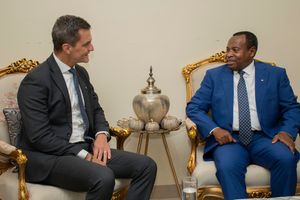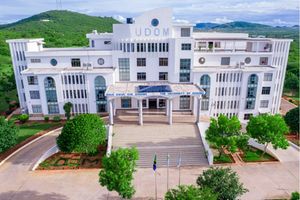Why TTCL must embrace fibre to become a game-changer

What you need to know:
- Fibre deployments aside, TTCL needs to develop a new business plan to commercialise its fibre infrastructure. To achieve that, they first must overcome the misconception that subscribers do not need fixed broadband. This notion is erroneous, as evidenced by China, which has the most advanced 4G and 5G infrastructures globally yet has laid 58 million kilometres of fibre to connect over 400 million FTTH subscribers
President Samia Suluhu Hassan has given TTCL a new mandate to transition into a broadband services provider following its failure as a telecom operator. While many observers expected TTCL’s failure, they are surprised by its lack of success despite its potential. TTCL has had so much going for it, but it has always managed to snatch defeat from the jaws of victory. The pressing issue now is how to transform TTCL into a successful broadband provider.
The solution lies in three crucial keys: fibre, fibre, and fibre.
TTCL had a unique opportunity to become a leader in this market two decades ago when an innovative TTCL engineer proposed to turn the company into a national data carrier by constructing a fibre optics network that would serve as a transmission backbone for other operators. At that time, TTCL boasted a nationwide infrastructure, and no competitor came close. But when the idea was not picked up, the engineer channelled it to the state house, where it was received enthusiastically. That is what has become the National ICT Backbone Network (NICTBB) nowadays.
The telecom market, while still in its infancy, was rapidly expanding. Operators started to lay down their fibre infrastructures: Vodacom built its metro in Dar es Salaam, and a consortium of Airtel, Tigo, and Zantel followed suit. While this was happening, TTCL watched uncomprehendingly as its competitive advantage was eroded.
Working on a project team implementing a 3,200-km fibre backbone for Tanesco then, I witnessed this naivety first-hand. In 2006, while at Kihansi, one of TTCL’s directors passed by and spent her time with us denouncing fibre and its potential. Fibre was not a big deal in Tanzania then, and it still isn’t, but it is still astonishing that someone responsible for developing a technology roadmap for such a large company could be so clueless about the significance of fibre in the telecom industry. For perspective, China had already deployed over 5 million kilometres of fibre cables by 2005.
NICTBB has been a great blessing in Tanzania. Prior to NICTBB, Vodacom had already established its fibre trunk from Dar to Dodoma. By 2010, other operators were also considering the same. Had that happened, infrastructure duplication would have increased subscribers’ costs significantly. NICTBB has made it possible to deploy telecom services across the country at a reasonable cost. Today, despite the willy-nilly increases in mobile broadband prices, NICTBB has played a significant role in keeping prices reasonable and the quality of services tolerable. NICTBB has also connected Tanzania’s landlocked neighbours, such as Malawi, Zambia, Burundi, and Rwanda, which has established Tanzania as a regional ICT hub.
TTCL should have seen and embraced this future 20 years ago.
NICTBB aside, Tanzanians have been quite slow in appreciating the potential for unleashing fibre here. Even NICTBB’s potential has not been realised yet. On one side, the government is hardly expanding the network—we are probably building more kilometres of roads per year than we lay fibre cables. On the other side, the 10,000km NICTBB network remains a white elephant, with some claiming that 70 percent of its capacity is not utilised (I think the figure is much, much higher).
To fully unlock its broadband potential, TTCL must fully embrace fibre and strive to become the fastest deployer of this technology in Africa. TTCL must lead the charge in making fibre central to all types of infrastructure works in Tanzania, spanning from water, sanitation, roads, railways, and power. By piggybacking on civil infrastructure projects, TTCL can reduce the cost of fibre deployments by two-thirds, making it an obvious solution. In countries like ours, it is a shame to see the construction of even a single kilometre of road without including provisions for fibre infrastructure.
In embracing its fibre optic future, TTCL must strategically shift from managing a national backbone (NICTBB) to managing a national broadband network (NBN). This shift is essential to realise the vision of making TTCL a true broadband provider. The concept of NBN is not new, and like NICTBB, it will play a significant role in unlocking the next phase of broadband development in Tanzania. Many challenges exist today, but a shift towards NBN could unlock broadband potential in Tanzania.
Fibre deployments aside, TTCL needs to develop a new business plan to commercialise its fibre infrastructure. To achieve that, they first must overcome the misconception that subscribers do not need fixed broadband. This notion is erroneous, as evidenced by China, which has the most advanced 4G and 5G infrastructures globally yet has laid 58 million kilometres of fibre to connect over 400 million FTTH subscribers. You cannot commercialise fixed networks while thinking that mobile networks can replace them. In reality, fixed broadband offers many possibilities that are not feasible with mobile broadband.
In conclusion, President Samia’s directive for TTCL to change its course has presented a massive opportunity for the company to revamp and transform itself into a game-changer in the Tanzanian market. Fibre is the key to achieving this goal, and if TTCL adopts the right approach, it can usher in a new era of affordable and high-quality broadband services for Tanzanians.




